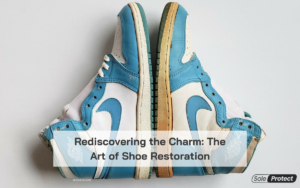
The global fashion industry has seen a profound shift in the last decade. As consumers become more conscious of their environmental impact, brands have been quick to adapt, offering products that cater to this growing demand. Within the fashion sector, the shoe industry is at the forefront of this sustainable revolution. In this article, we’ll delve deep into the rise of sustainable footwear, understand its importance, and glimpse at the future of eco-friendly shoes.
1. What is Sustainable Footwear?
Sustainable footwear refers to shoes that are designed, produced, and distributed in ways that prioritize the environment. This might include using recycled or biodegradable materials, reducing carbon emissions in the production process, or implementing ethical labor practices.
2. Why the Surge in Demand?
Several factors contribute to the increasing demand for sustainable footwear:
- Awareness of Environmental Impact: News about climate change, oceanic plastic pollution, and deforestation has made consumers more aware. They seek products that have a minimal negative impact on the environment.
- Celebrity Influence: Numerous celebrities have endorsed or launched their line of sustainable footwear, elevating its status and appeal.
- Technological Advancements: Innovations have enabled the creation of durable and stylish shoes from recycled and eco-friendly materials, making them competitive with traditional counterparts.
3. Pioneers in the Sustainable Shoe Movement
Brands like Allbirds, TOMS, and Veja have not only embraced the sustainable approach but have also set benchmarks for others to follow. Using materials like wool, recycled plastic, and organic cotton, these companies have showcased that style, comfort, and sustainability can coexist.
4. The Environmental Impact of Traditional Footwear
To understand the importance of sustainable footwear, it’s essential to recognize the environmental footprint of traditional shoe manufacturing:
- Waste Production: A significant amount of waste is generated, with many shoes ending up in landfills due to fast fashion cycles.
- Water Usage: The production of materials, especially leather, requires vast amounts of water.
- Carbon Emissions: The shoe manufacturing process, coupled with transportation, contributes significantly to greenhouse gas emissions.
5. The Road Ahead
The sustainable footwear trend is not just a fleeting one. As technology continues to advance, and the demand for sustainable products grows, it’s expected that more shoe brands will integrate green practices into their business models. Biodegradable shoe components, zero-waste manufacturing, and ethical labor practices are expected to become industry norms rather than exceptions.
The shoe industry’s shift towards sustainability reflects a larger movement in the global consumer market. As awareness grows and technology advances, sustainable footwear is poised to become a mainstay, making the industry a true trailblazer in eco-friendly fashion.




